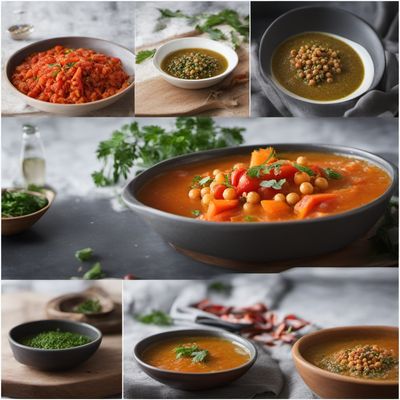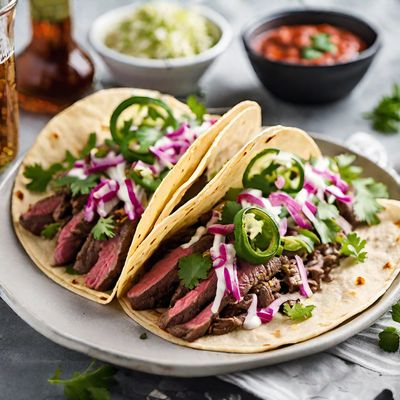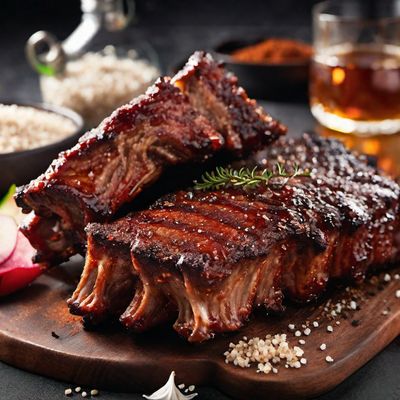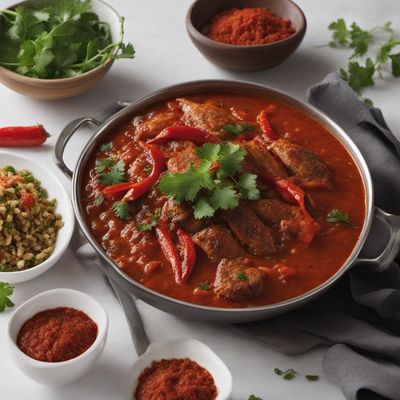
Ingredient
Peppers, dried
The Fiery Essence of Sun-Dried Peppers
Dried peppers are created by allowing fresh peppers to wither and dry, intensifying their flavors and heat. They come in various shapes, sizes, and levels of spiciness, ranging from mild to extremely hot. With their vibrant colors and smoky undertones, dried peppers are a versatile ingredient that can be used to add depth and complexity to soups, stews, sauces, marinades, and spice blends.
Origins and history
Dried peppers have a rich history dating back thousands of years, with evidence of their use in ancient civilizations such as the Aztecs and Mayans. They were highly valued for their intense flavors and were often used as a form of currency. Today, dried peppers are widely cultivated and enjoyed in many regions, including Mexico, India, China, and the Middle East.
Nutritional information
Dried peppers are low in calories and fat, but rich in vitamins A and C, as well as capsaicin, a compound known for its potential health benefits, including pain relief and metabolism boosting properties.
Allergens
Dried peppers may cause allergic reactions in individuals who are sensitive to nightshade vegetables. Symptoms may include itching, swelling, or difficulty breathing. It is advisable to exercise caution and consult a healthcare professional if you have known allergies.
How to select
When selecting dried peppers, look for ones that are pliable, with a deep color and a slightly wrinkled texture. Avoid peppers that are overly brittle or have signs of mold or discoloration. Opt for reputable brands or sources to ensure quality and authenticity.
Storage recommendations
To maintain the freshness and quality of dried peppers, store them in an airtight container in a cool, dark place, away from moisture and direct sunlight. Properly stored, dried peppers can retain their flavor and potency for up to a year or longer.
How to produce
Dried peppers can be produced by allowing fresh peppers to air dry or by using a dehydrator. Simply wash and dry the peppers, remove the stems and seeds, and lay them out in a single layer on a baking sheet or dehydrator tray. Place them in a well-ventilated area or set the dehydrator to a low temperature, and allow the peppers to dry until they are crisp and brittle.
Preparation tips
Dried peppers can be rehydrated by soaking them in hot water or by adding them directly to dishes with sufficient liquid. They can be ground into powders or flakes, used whole in stews or braises, or blended into sauces and salsas for an added kick. Remember to handle dried peppers with caution, as their concentrated heat can be intense.
Culinary uses
Dried peppers are widely used in cuisines around the world. They are essential in Mexican dishes such as mole sauce and adobo, as well as in Indian curries, Chinese stir-fries, and Middle Eastern spice blends. They can also be used to infuse oils, vinegars, and spirits, adding a fiery twist to dressings, marinades, and cocktails.
Availability
Dried peppers are commonly available in grocery stores, supermarkets, and specialty spice shops worldwide.
More ingredients from this category
Recipes using Peppers, dried » Browse all

Moukhbaza with a Twist
Savory Tunisian Delight: Spiced Chickpea Stew

Moroccan Curry
Spiced Delight: Moroccan Curry with a Twist

Zimbabwean-style Grilled Fish with Peanut Sauce
Savory Delight: Grilled Fish with Zimbabwean Peanut Sauce

Bavarian-style Carne Asada Tacos
Bavarian Fiesta Tacos: A Fusion of Mexican and Bavarian Flavors

Tokhme Banjanromi - Crimean Tatar Style Eggplant Stew
Savory Crimean Delight: Tokhme Banjanromi - Eggplant Stew with a Twist

Molecular Gastronomy Barbecue Ribs
Sous Vide BBQ Ribs with Molecular Flair

Berber-style Braised Beef with Spiced Rice
Savory Berber Delight: Slow-cooked Beef with Fragrant Spiced Rice

Turkish-inspired Lamb Köfte with Yogurt Sauce
Sizzling Lamb Köfte: A Flavorful Turkish Delight

Carne Entomatada with a Twist
Savory Tomato-Braised Beef Delight

Moroccan-Inspired Tapas
Spices of the Medina: Moroccan-Inspired Tapas Delight

Murgh Malai - Bosnian Style
Creamy Bosnian Chicken Curry

Neretvanski Brudet Adapted to Burundian Cuisine
Lake Tanganyika Fish Stew: A Burst of Burundian Flavors
